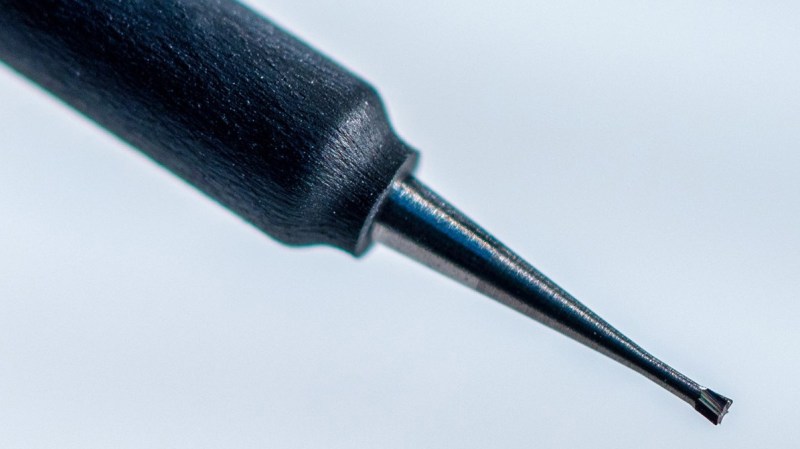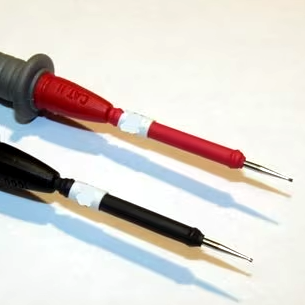Dentist Tool Hardware Inspires Non-Slip Probe Tips

Cross-pollination between different industries can yield interesting innovations, and a few years ago [John Wiltrout] developed some non-slip meter probe adapters. He recently used our tips line to share some details that you won’t see elsewhere, letting us know how the idea came to be.
It started with [John] being frustrated by issues that will sound familiar: probes did not always want to stay in place, and had a tendency to skid around at the slightest provocation. This behavior gets only more frustrating as boards and components get smaller. John was also frustrated by the general inability to reliably probe through barriers like solder masking, oxidation, and conformal treatments on circuit boards.

At the time [John] was in the dental equipment service industry, and one day he received a visit from the Good Ideas Fairy. He got the idea to use one of the special tungsten carbide tipped dental burrs as a probe tip.
The tips of these tools are in the shape of a tiny inverted cone with flutes forming a very sharp (and very hard) crown of points around the base. Using this as a probe tip worked so well that [John] knew he was onto something. Not only does such a tip stay in place wherever it is placed, but the durable micro points easily penetrate thin coatings (including the enamel on transformer wire.) [John] found that he could place his multimeter’s probes on two legs of a component, hold the probes in place with one hand, and adjust a potentiometer with the other. Bliss! As a safety bonus, the shape of the tool means it does not easily penetrate skin, despite its sharpness.
[John] turned the idea into a niche product, and while he still personally makes each set on his basement drill press, you can find them at Tag-Connect (which you may recognize as the same Tag-Connect that shrank the ICP header with their innovative connector design.)
We love it when people include details about their process, and can talk about what did (or didn’t) work. Got something to share that’s along those lines? Let us know about it!
from Blog – Hackaday https://ift.tt/MqCt9x8
Comments
Post a Comment